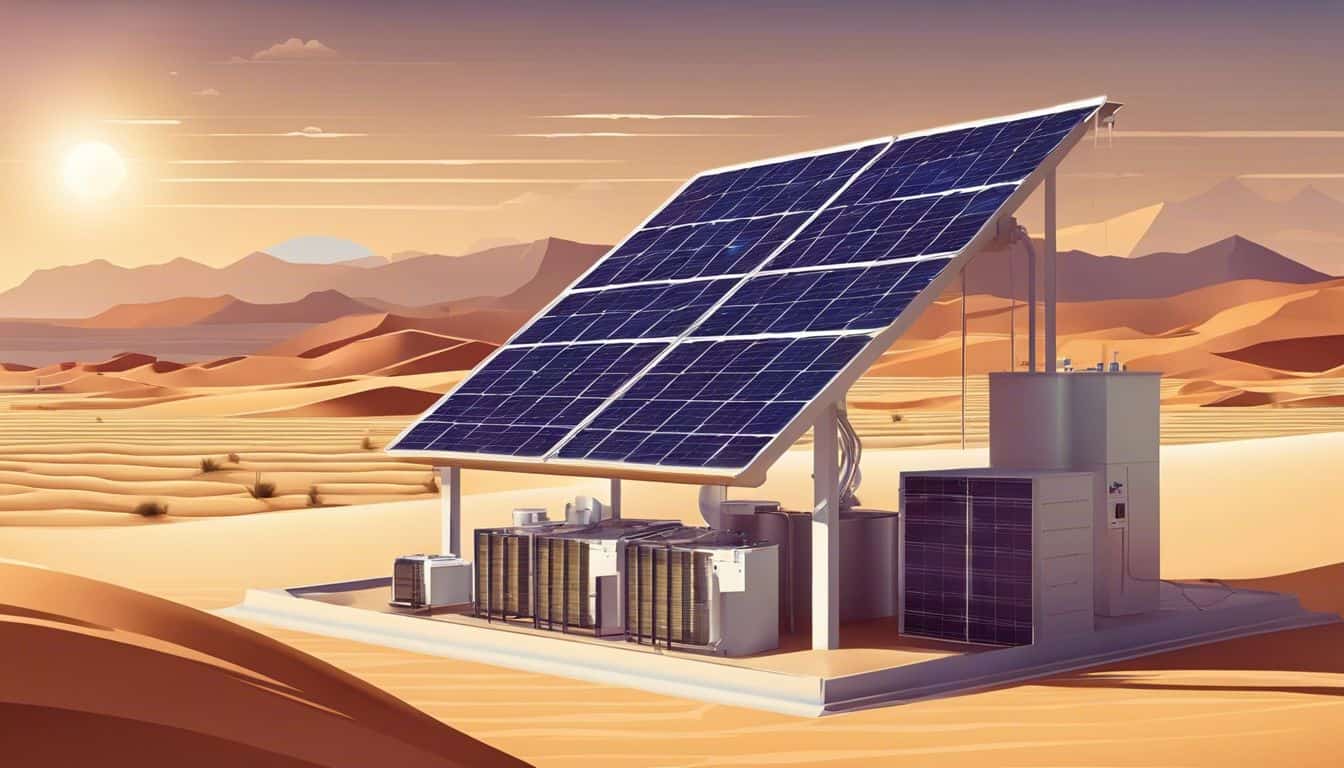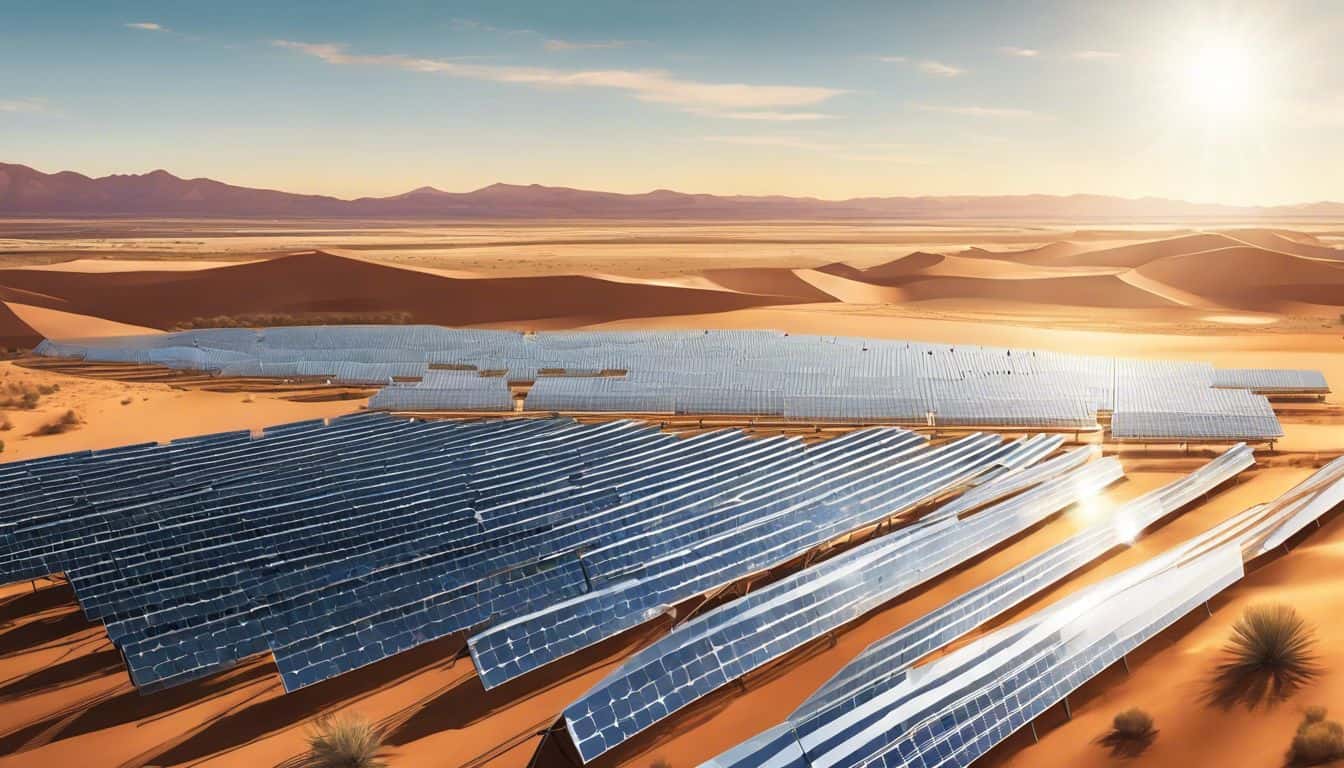As the world increasingly turns to renewable energy sources to combat climate change, concentrated solar power (CSP) has emerged as a promising technology. However, like all energy production methods, CSP has its own environmental considerations. This article delves into the ecological impacts of CSP installations and explores ways to balance clean energy production with environmental stewardship.
Introduction: The Promise and Challenges of CSP
Concentrated Solar Power harnesses the sun’s energy by using mirrors or lenses to focus sunlight onto a small area, generating heat that can be used to produce electricity. While this technology offers a clean alternative to fossil fuels, addressing the environmental concerns associated with its implementation is crucial. As we strive for a sustainable future, understanding and mitigating these impacts is paramount to ensuring that our clean energy solutions don’t create new environmental problems.
Land Use and Habitat Disruption
One of CSP’s most significant environmental concerns is its substantial land requirements. These installations often span vast areas, particularly in desert regions with abundant solar resources. While these arid landscapes might seem ideal for solar development, they are far from barren in ecological value.
The construction and operation of CSP plants can lead to habitat fragmentation and disruption of local ecosystems. Desert flora and fauna, which have adapted to harsh conditions over millennia, can face significant challenges when their habitats are altered. For instance, the construction of CSP facilities may interfere with the migration patterns of wildlife or destroy the delicate root systems of desert plants that play crucial roles in preventing soil erosion.
To address these concerns, developers increasingly focus on local impact assessments of concentrated solar power projects. These assessments help identify sensitive habitats and species, allowing for more informed site selection and the implementation of mitigation strategies to minimize ecological disruption.
Water Consumption: A Thirsty Technology
In regions where water is scarce, the water consumption of CSP plants becomes a critical environmental concern. Traditional CSP designs, particularly those using steam turbines for power generation, require significant amounts of water for cooling purposes. This high water usage can strain local water resources, potentially affecting human communities and natural ecosystems.
Researchers and engineers are developing innovative cooling technologies that reduce water consumption to address this issue. Dry cooling systems, though less efficient, can significantly decrease water usage. Hybrid wet-dry cooling systems offer a compromise, balancing water conservation with operational efficiency.
Some CSP plants are also exploring using reclaimed or brackish water for cooling, reducing the strain on freshwater resources. As water scarcity becomes an increasingly pressing issue globally, the development of water-efficient CSP technologies will be crucial for the sustainable expansion of this energy source.
Avian Mortality: Unintended Consequences
One of CSP’s more publicized environmental concerns is its impact on bird populations. The intense, concentrated sunlight at CSP facilities can create zones of extreme heat, posing a risk to birds flying through these areas. This phenomenon, sometimes called “solar flux,” can cause injury or death to birds that fly too close to the focal points of the solar collectors.
Additionally, the large reflective surfaces of CSP installations can attract insects, which in turn draw insectivorous birds to the area, potentially increasing their exposure to the hazardous solar flux zones.
To mitigate these risks, CSP developers are implementing various strategies. These include using deterrent systems to keep birds away from dangerous areas, adjusting mirror positioning during non-operational hours to reduce the risk to wildlife, and conducting thorough environmental impact assessments to avoid placing CSP facilities in major bird migration routes.
Visual and Aesthetic Impacts
Another significant concern is the visual impact of large-scale CSP installations on landscapes, particularly in pristine desert environments. These facilities, with their expansive fields of mirrors or towering solar power towers, can dramatically alter an area’s visual character.
This change can have implications beyond mere aesthetics. It can affect cultural and recreational land use, potentially impacting tourism in areas valued for natural beauty. The glare from reflective surfaces can also be a source of light pollution, affecting wildlife and human activities in the surrounding areas.
Mitigating these visual impacts often involves careful site selection, considering the visual sensitivity of different landscapes. Some CSP designs also incorporate features to reduce glare and blend more harmoniously with their surroundings.
Thermal Pollution and Local Climate Effects
CSP plants concentrate and absorb large amounts of solar energy. This concentration of heat can create localized “heat islands,” potentially altering microclimates around the facilities. These thermal effects can impact local ecosystems, affecting plant growth patterns and animal behaviors.
Research is ongoing to understand the full extent of these thermal impacts and develop strategies to mitigate them. Some approaches include optimizing plant design to minimize heat dispersion and implementing vegetation strategies around CSP facilities to help regulate local temperatures.
Material Production and Waste Management
While CSP technology produces clean energy, manufacturing CSP components and disposing of materials at the end of a plant’s life cycle present environmental challenges. The production of mirrors, receivers, and other components requires energy and resources, and some CSP technologies use materials that can be hazardous if not properly managed.
Addressing these concerns requires a lifecycle approach to CSP development. This includes focusing on sustainable manufacturing practices, using recyclable materials where possible, and developing comprehensive end-of-life plans for CSP facilities. As the industry matures, there’s an increasing emphasis on circular economy principles, aiming to minimize waste and maximize the reuse and recycling of materials.
Balancing Concerns with Clean Energy Benefits
Despite these environmental concerns, it is crucial to view CSP in the broader context of energy production and climate change mitigation. Compared to fossil fuel alternatives, CSP offers significant environmental benefits, particularly in reducing greenhouse gas emissions and air pollution.
The key lies in responsible development and continuous innovation. By addressing environmental concerns head-on and investing in research and development, the CSP industry can enhance its positive impact while minimizing negative consequences. For a deeper dive into how CSP is evolving to meet these challenges, explore this guide on concentrated solar power innovations.

Conclusion: Towards Sustainable CSP Development
As we navigate the complexities of transitioning to clean energy, concentrated solar power clearly has a significant role to play. However, this role must be carefully balanced with environmental stewardship. By acknowledging and actively addressing the environmental concerns associated with CSP, we can work towards a future where this technology not only provides clean energy but does so in harmony with the natural world.
The path forward involves continued research, innovative design solutions, and a commitment to best practices in site selection, construction, and operation. It also requires a holistic approach that considers the entire lifecycle of CSP facilities, from manufacturing to decommissioning.
Ultimately, the goal is to harness the power of the sun while preserving our planet’s diverse ecosystems and natural beauty. This balance is not just possible; it’s essential for achieving sustainable development through concentrated solar power. As we refine and improve CSP technology, we move closer to a future where clean energy and environmental protection go hand in hand, paving the way for a genuinely sustainable energy landscape.
FAQS
How does concentrated solar power (CSP) help conserve water resources?
CSP technology offers several ways to reduce water consumption in energy production:
- CSP plants use less water for cooling and steam generation compared to traditional power plants
- Researchers are developing air-cooling methods for CSP systems to minimize water usage further
- By generating clean electricity without relying heavily on water, CSP helps alleviate the strain on limited freshwater resources
- As CSP adoption grows, it can significantly reduce the overall water footprint of the energy sector
What role do solar-powered pumps play in sustainable agriculture?
Solar-powered pumps are revolutionizing water management in agriculture:
- These pumps harness solar energy to draw water for irrigation, reducing the need for diesel or electric pumps that consume more water
- By using solar power, farmers can access water in remote areas without relying on the grid or fossil fuels
- Solar pumps promote more efficient water use and help lower carbon emissions associated with agricultural activities
- Adopting solar-powered pumps can lead to more sustainable and resilient food production systems
How can solar desalination address water scarcity in dry regions?
Solar desalination is a promising solution for areas facing water shortages:
- This process uses solar energy to convert saltwater into freshwater, providing a clean and renewable source of drinking water
- Solar desalination can be particularly beneficial in arid and semi-arid regions with limited access to freshwater resources
- By harnessing the sun’s power, solar desalination avoids the environmental impacts associated with fossil fuel-based desalination methods
- As the technology advances and becomes more cost-effective, solar desalination can play a crucial role in addressing global water scarcity
Why is solar power more water-efficient than traditional energy sources?
Solar power has a significant advantage over conventional energy sources when it comes to water conservation:
- Coal, nuclear, and other thermal power plants require large amounts of water for cooling, which can strain local water resources
- In contrast, solar photovoltaic (PV) panels generate electricity without needing water for operation
- While some water is used in the manufacturing of solar panels, the overall water footprint of solar power is much lower than that of fossil fuels
- By transitioning to solar energy, we can reduce the energy sector’s reliance on water and help preserve this vital resource
How can Concentrated Solar Power and rainwater harvesting work together?
Combining CSP with rainwater harvesting creates a sustainable, water-smart energy solution:
- CSP systems can be designed to collect and store rainwater, providing a renewable source of water for various needs
- Harvested rainwater can be used for cooling and steam generation in CSP plants, further reducing their reliance on external water sources
- Solar-powered pumps can be used to distribute the collected rainwater for irrigation, drinking, or other purposes in the community
- By integrating CSP and rainwater harvesting, we can create self-sufficient, water-wise energy systems that support local needs

Leave a Reply